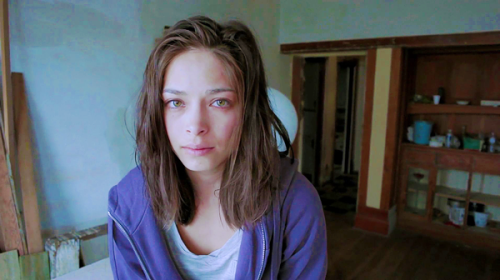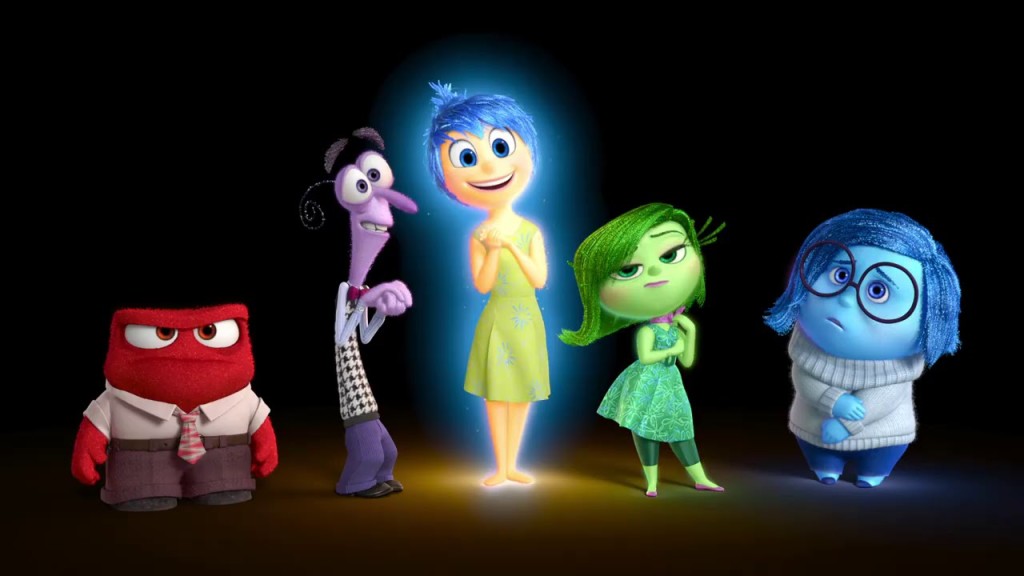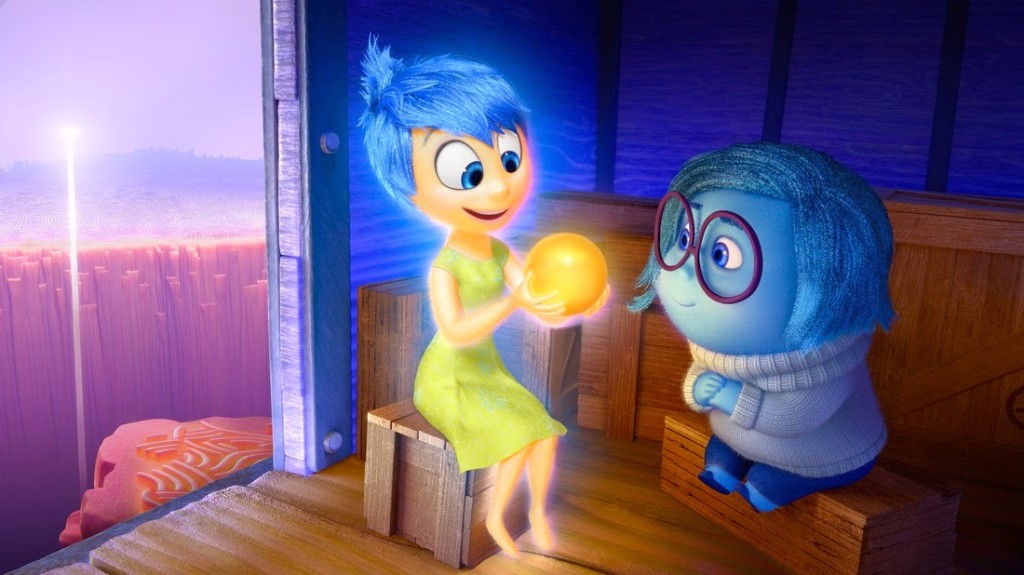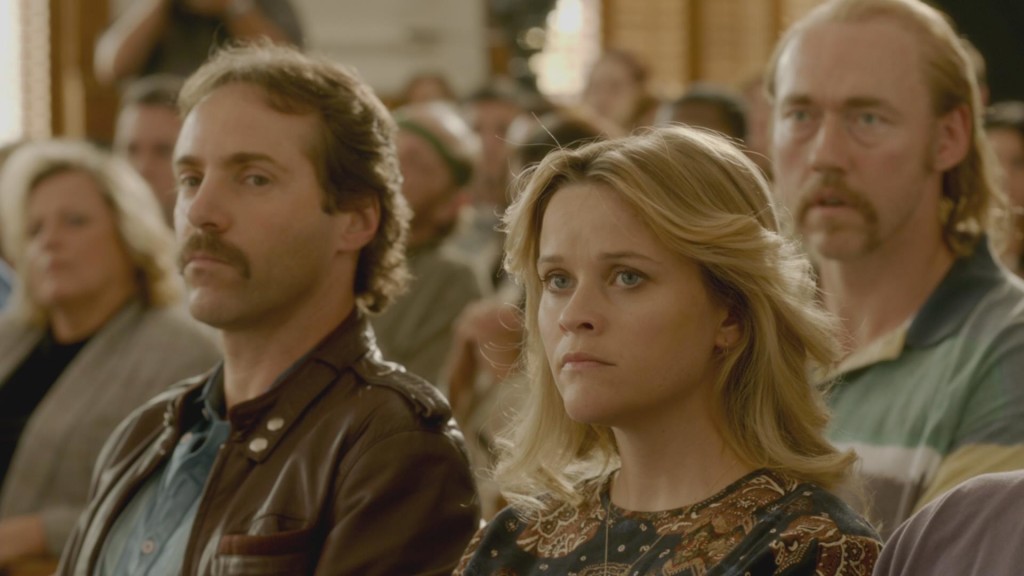Genre: Drama/Period/Thriller
Premise: Set in the early 19th century, a group of fur traders leave one of their own to die after he gets injured. Unfortunately for them, he survives, and he’s got vengeance on his mind.
About: You may not have heard of The Revenant yet, but you will. The movie is poised to win so many Oscars, they might as well let everyone involved produce that night’s show. It’s directed by the guy who did Birdman. It stars Leonardo DiCaprio. It co-stars Leo’s best bud, Tom Hardy. It’s also got one of the hottest actors in England, Ex Machina and Star Wars 7 star Domhnall Gleeson. Throw in one of the hippest young actors around, Will Poulter, and this thing bleeds Oscar juice. The script has been in development at Leo’s company for a long time. This draft was written by Mark L. Smith in 2007. However, Inarritu did a director’s pass on it before shooting (and is actually taking a screenplay credit). Also, they’ve changed the ethnicity of the main character, Hugh Glass, from African-American to white, so that Leo can play him. Don’t worry though. As far as I can tell, this isn’t a Rachel Dolezal situation.
Writer: Mark L. Smith (based on the novel by Michael Punke)
Details: 104 pages
I’ve heard so many great things about this script, I’ve needed to open an Excel spreadsheet to keep track of the compliments. Over ten members of the Scriptshadow Community have checked it out. Seven of them told me it was great. Two liked it. And only one actively disliked it.
Even with those expectations, I came out of this one shaking. I don’t know if this is an acceptable way to describe a period piece. But basically, The Revenant is Gravity set in 1820. Confused? Read on.
It’s 1820, Missouri. Fur trading was the Uber of the time, and we’re following a group of fur traders down the river when they’re attacked by a particularly nasty tribe of Indians known as the Arikara.
Half the traders are killed and it would’ve been more had Hugh Glass, a badass navigator, not beaten some Arikara ass. Glass ends up saving two men in particular, the mentally unstable John Fitzgerald and eager young buck, Jim Bridger.
After they’ve escaped, in a freak attack, Glass gets pummeled by a bear that practically rips his face off. He kills the bear somehow (He kills a fucking bear!), but it leaves him a barely recognizable twisted mass of blood and guts. Somehow, the captain of the operation stitches Glass up, but he can barely breathe, much less move.
The traders wait for Glass to die so they can continue on, but Glass is a fighter. He will – not – die. The Captain eventually convinces Fitzgerald and Bridger to watch over Glass while they get help from the nearest outpost. But Fitzgerald gets bored and convinces Bridger to leave Glass to die. He’s barely clinging to death anyway. It’s not like he’s going to live through this.
But Glass somehow lives through this. A man who can’t even move somehow figures out how to feed himself (eating grass), drink (he rolls into a marsh), travel (he crawls onto a floating log in the river), fix the hole in his throat (he burns it closed with gun powder).
He survives rattlesnakes, gangrene, waterfalls, boulders at the bottom of waterfalls, maggots eating away at his open wounds, Vultures who eat him alive, racism, and multiple attacks from Indians. Glass can’t go a step without something attacking him. And somehow, he survives it all.
All so he can find the men who left him to die – the men he will not rest until he kills.
There’s this show I used to watch called “I Survived.” It’s a brilliantly simple concept. People who survived all sorts of crazy shit are interviewed about their experience. They take you through their story step by step, reliving the impossible way in which they cheated death.
In this show, you hear about people who survived F5 tornados, mountain lion attacks, having their arms ripped off by farming machines, airplane crashes, house fires. But all of these stories would pale in comparison if Hugh Glass told his story.
I mean this guy’s survival skills are insane. There’s this scene early on, after he’s been left, where he’s trying to move five feet. Just FIVE FEET. And all he has is a gimp arm and a barely-operational leg. And he’s just SLIDING, millimeter by millimeter, forward.
Or later, when he finally gets to water, he desperately tries to take a drink, only to watch the water leak out of the hole in his throat left from the bear attack. So what does he do? HE LIGHTS HIS NECK ON FIRE AND BURNS THE HOLE CLOSED. That’s when I realized I was onboard for the full trip on this one. Any character who does THAT to survive, I want to see what he’s gonna do next.
You see, not enough writers write characters that you want to ROOT FOR. They write characters who are mean or dumb or apathetic or boring and expect us to be like, “Yeah! What’s going to happen next!”
You know the guy I want to follow? The guy who wants to live so badly, he will snort out snot and blood to crawl five feet in 60 minutes. That’s the guy I want to follow. The guy who WANTS TO SURVIVE. The guy who WILL KEEP FIGHTING UNTIL HIS LAST BREATH.
The Revenant also taught me that if you want to make a character likable, do so THROUGH HIS ACTIONS as opposed to THROUGH HIS WORDS. For example, I see a lot of writers who say, “Okay, what can I have my hero say so that he’ll be likable?” And they’ll try to make him funny. Or they’ll have him compliment other characters. Or they’ll try to give him a “magnetic” personality.
And it’s not like those things don’t work if done right. But if you REALLY want to make a character likeable, do it through his actions. When the Arikara attacked, Glass was one of the only traders SAVING OTHERS. He was one of the only guys unafraid of the moment. His bravery saved lives, and THAT made him likable. Then later on, when he’s clinging for life, he KEEPS FIGHTING. Audiences admire that. They like people who fight.
Moving on, one of the best ways to make a script spec-friendly is to give your characters a PHYSICAL DESTINATION they’re headed to. Here, the traders are headed to an outpost. Even after they leave Glass, we know Glass is headed to that same outpost so he can kill the men who left him.
The reason physical destinations work so well is because the audience is never confused. I read so many amateur screenplays where I have no idea what’s going on because characters are just running into each other and babbling about who knows what. When you have a “physical destination” story, your reader will never be confused. He knows exactly what your hero is trying to do and this trick keeps the story on point. Not to say it’s the only way to write a script. But if you have this, you have a huge advantage in the clarity department.
The only reason I’m not assigning The Revenant an “Impressive” is because of Glass’s motivation. He wants to avenge these two guys who left him. But the thing is, they actually had good reason to leave him. They were in dangerous Indian territory and Glass was barely clinging to life. Any doctor in the world would’ve told you he had a .000001% chance of surviving. And they barely even knew Glass. It’s not like they were best friends. So to leave him made sense on some level. And you’d think Glass would understand that.
I mean, contrast this motivation with the motivation in The Brigands of Rattleborge. The bad guy had raped and killed the hero’s wife. THAT’S something you avenge. It’s a seemingly small detail but if you’re going to base an entire story around revenge, you want the matter that the character is avenging to be as intense as possible.
Still, holy shit. This was an awesome story. And proof that if you write an awesome character (the “never give up” Glass), A-list actors will want to play the part. Hell, they’ll even make you change the character’s ethnicity to play the part.
[ ] what the hell did I just read?
[ ] wasn’t for me
[xx] worth the read
[ ] impressive
[ ] genius
What I learned: “Physical destination” stories work particularly well as scripts because the reader is never confused about what’s going on. There’s a comfort and a clarity in knowing exactly where our hero is headed.
How did a TV pilot about incest, drug addiction, and imprisonment lead to today’s writer getting Pixar’s “Inside Out” assignment? Read on to find out!
Genre: TV Pilot – Drama
Premise: We follow a group of adults in various stages of arrested development, highlighted by a strange man who’s secretly imprisoning his wife.
About: So you know that mega-hit from this past weekend, Inside Out? Well, it wasn’t just Docter who wrote it. One of the writers was Meg LeFauve. How did a relatively unknown writer score a writing gig on one of Pixar’s biggest movies? This pilot is how. Just goes to show that if you write something good, it might not sell, but it can open a lot of doors for you. “Girl in a Box” is said to have been LOVED by Disney and Pixar CCO, John Lasseter.
Writer: Meg LeFauve
Details: 66 pages
What I love most about this success story is that Meg LeFauve’s pilot about the terrors beneath the surface of our everyday lives couldn’t have been further from a children’s movie about animated emotions. Then why was she chosen for Inside Out? It’s because this industry celebrates one skill above all others – character development.
If you can write convincing interesting characters, you can do it in any genre. Sci-fi, Western, Drama, Comedy, Adventure, it doesn’t matter. Character creation is about finding the truth of the character, giving them unresolved issues in both their exterior and interior lives, and then throwing a bunch of shit at them and seeing how they react. To this end, Girl in a Box is a terrifying delight. With emphasis on “terrifying.”
Our seemingly unrelated cast of characters begins with Jane, a sort of zoned-out 24 year-old beauty who’s just moved into the neighborhood. When we meet her and her older, socially awkward husband, Frank, the two have crashed neighbor, John’s, home, so that Frank can find some clients for his one-man computer business.
It becomes clear to us that something’s off about Jane. She seems eternally zoned out. But that doesn’t stop John, who’s a few months away from marrying his wife, from flirting with her. Despite Jane’s beauty, flirting seems to be a new experience for her, but one she cannot reciprocate for long. There’s fear in the back of Jane’s eyes. That much is clear.
You see, Frank is imprisoning Jane. He keeps her in a box at night, and controls her every move. How long this has been going on, we can only guess.
Meanwhile, across town, we’ve got 20-something drug-addict Dara, who’s just moved back into town. Dara needs a place to shack up while she gets sober and hits up her cousin, Michael, a local attorney with a big future ahead of him. The two seem to have some kind of weird chemistry together, and we can tell that he’d never say no to her.
We also learn that when Dara was young, she snuck out at night when she was supposed to be babysitting Michael’s sister, Casey. While partying with her friends, Casey walked off and that was the last anyone ever saw of her. Needless to say, Dara’s never been forgiven from either Michael’s side of the family or her own. Which has only pushed her into using more.
Towards the end of the pilot, we figure out what’s going on. Jane, the girl in the box, is Casey. And neither Dara or Michael realize that their sister/cousin is only a few blocks away from where they live. Will they ever figure this out? And will Jane, who’s finally building up the courage to take chances, find a way out of this prison she’s lived in since she was a little girl?
The first thing that popped out at me about Girl in a Box was LeFauve’s VOICE. The writing here was stronger than the writing I’ve been seeing lately. And you don’t realize how plain writing is until something comes along that’s better. LeFauve’s stuff is better and it’s because her words and her choices have more life to them.
For example, when we first meet Jane, we hop inside of her POV. And the world becomes FLATTER, less colorful, because Jane’s entire life has been a nightmare. She hasn’t lived a minute of freedom in 20 years. So naturally, she’s going to see the world differently. That was clever.
And there were little things – breadcrumbs almost – to keep you turning the pages. Like when Jane goes to the bathroom at this party and slips one of the pretty seashell-shaped bars of soap into her pocket. We’re curious. Why would she do that? We want to know more about this girl.
The conversations between characters didn’t have that nailed down stiff feeling to them I read in a lot of scripts/pilots either. There was an electricity floating just beneath the dialogue. Like when John meets Jane out in the garden.
John is out there hiding from his fiancé and her mother. So right away, the scene’s got some charge to it. We’re not standing in the middle of a room full of people boringly sharing backstory. John’s got a secret and since we just saw Jane steal that bar of soap, we know she’s got a secret too. This is how you bring a conversation to life.
And it’s also because these characters are so distinct. Creating distinct characters takes a long time for screenwriters to learn. The problem is that you’re only one mind as a writer. So even though you’re switching back and forth between characters on the page, you’re still staying in your own brain.
This is why a common criticism a lot of new screenwriters get when people read their screenplay is: “All your characters sound the same.”
When creating characters, you have to define something unique about them, a dominant trait that makes them stand out. You do this for everyone and now, when you shift between characters, your mind shifts into that trait, allowing you to “speak” from a different perspective.
And we see that here. Jane is detached. Frank is socially awkward and creepy. Dara is mischievous. Michael is the golden boy trying desperately to live up to his reputation. There’s very little overlap in any personality traits here, which is another thing that helps each character feel like their own person.
This all might sound obvious to you. I can hear writers saying, “Duh, that’s what you do. You make characters different.” And yet time and time again when I read amateur scripts, the characters are laughably undefined. Either writers try to make them too complex, giving them so many traits that you don’t know which one defines them. Or they haven’t defined their characters at all, assuming you’ll get a “feel” for them because they, the writer, have a “feel” for them.
If you’re selling your characters on a “vague feeling,” I got news for you. Your characters suck.
Any time you read a script and each character in that script feels DIFFERENT, you know you’re reading someone who knows what they’re doing. Because most writers either don’t put the effort into making their characters unique, don’t think it’s important, or don’t know how. If you can nail character creation – if you can write 5 or more distinct characters that all feel like individual people – that’s when companies like Pixar start calling you.
[ ] what the hell did I just read?
[ ] wasn’t for me
[xx] worth the read
[ ] impressive
[ ] genius
What I learned: This is a really easy way to improve your character creation. Go through every character in your screenplay and assign them ONE DOMINANT TRAIT. Then make sure you hit on that trait over and over again. Han Solo – He’s a cocky motherfucker. Claire from Jurassic World – all she cares about is work. Anna from Frozen – she’s a goofball. Amy from Gone Girl. She was vindictive. The character will evolve out from that dominant trait to have a number of secondary traits. But you need that dominant trait as an anchor. That’s the trait the reader needs to identify that character.
Pixar continues to make a laughingstock out of the competition with its storytelling skillz.
Genre: Animation Drama/Comedy
Premise: We follow the physical embodiment of an 11 year-old girl’s emotions as her family makes the move from Minnesota to San Francisco.
About: Inside Out may not have taken down Chris Pratt and his dino-pals this weekend, but the animated feature did score a 91 million dollar take, making it the highest grossing original idea… EVER.
Writers: Meg LeFauve & Josh Cooley and Pete Docter (story by Pete Docter and Ronaldo Del Carmen)
Details: 94 minutes
One of the reasons Pixar is so successful is that they take chances. Unlike Disney or Dreamworks or Fox Animation, their first thought when coming up with an idea isn’t, “How many toys will it sell?” It’s “How can we write a great story that’s going to move people?” We’re talking about the company that brought the world an 80 year-old protagonist whose wife just died here.
Pixar also puts a ton of stock into feedback. They don’t follow the traditional model of “auteur Russian roulette” which offers a big ego-centric director carte blanche over their movie and whatever he comes up with, he comes up with.
Each draft of a Pixar screenplay is heavily scrutinized by the Pixar brain trust. If something’s not working, they’re going to tell you. And it’s one of the reasons the company has such a good track record. Their screenplays have been put through the ringer.
Inside Out is easily the most ambitious idea Pixar has ever had. Instead of featuring the go-to character groups of humans or animals, Pixar’s replaced them with things that don’t even exist. The movie doesn’t even take place in a realistic environment. It takes place inside someone’s mind, requiring the writers to create an entire new world with a new set of rules.
You’ve never seen anything like it and, outside of its impending sequels, will never see anything like it again. Nobody else would’ve had the balls to make this movie, and that alone is reason to take a closer look.
Inside Out is about an 11 year-old girl, Riley. Well, sorta. That’s another thing about Inside Out. Its main character isn’t really its main character. Its true main character is Joy, the feeling at the center of Riley’s brain. Joy isn’t the only feeling in this control center. There’s Sadness, Fear, Anger, and Disgust. This 5-thing group are in charge of making Riley go.
That group meets its most difficult challenge yet when the family unexpectedly moves from the quaint confines of rural Minnesota to the urban closet of San Francisco. Riley loses all her friends and her dearest love, hockey, and it’s up to Joy to keep the group together. For Joy has one goal and one goal only, to keep Riley as happy as possible.
This is where we’re introduced to the biggest risk of all in Inside Out, its mega-complex inner brain workings. There’s a lot going on here but the basic breakdown is that whenever Riley records a memory, it rolls into her “file system” in the form of a sphere that is color-coded based on the emotion associated with it. Joy is yellow, so happy memories come in yellow. Sadness is blue, so sad memories come in blue. Etc., etc.
Riley also has a series of “personality islands” inside her brain, each represented by a physical island we can see. There’s Goofball Island, Hockey Island, Family Island. When Riley acts like a monkey for no reason, for example, Goofball Island lights up excitedly.
Inside Out is about what happens when Riley’s core memories (another rule-set within the mind – basically the most important memories) start turning blue, which has never happened before. When Joy tries to fix this, her and Sadness accidentally get sucked into Riley’s long-term memory (think a never-ending stack of spheres), and must find a way back to the control center.
In the meantime, with only anger, disgust, and fear to guide her, Riley decides that she hates San Francisco and wants to go back to Minnesota. So she secretly buys a bus ticket and sneaks away to the bus station. It’ll be up to Joy (and Sadness) to get back to the control center in time to stop Riley from getting on that bus. The question is, how far will Joy go to save Riley? Will she ditch Sadness? And is eliminating sadness a good thing?
I went into a more detailed breakdown of today’s plot for a reason. This was a HUGE risk taken by Pete Docter and the crew at Pixar. While breaking storytelling rules often hurts a screenplay, it’s how you break the rules that makes your script unique, that differentiates it from everything else. So for that reason, rule-breaking empowers you.
I have no doubt that 99% of the executives outside of Inside Out would’ve told Docter that his screenplay contained too much exposition. It was like the anti-Mad Max: Fury Road (TLDR – George Miller avoids exposition at all costs). There are different emotions, multi-colored sphere memories, core memories, “islands” inside the brain.
I’m not exaggerating when I say that your average contest-reader would’ve laughed Inside Out out of the contest. The first 20 minutes of the movie are dedicated to our characters explaining how the brain works.
So why doesn’t this sink Inside Out? There are a couple of reasons. Those who have read my book may remember my rule for exposition in regards to The Matrix. The Matrix’s huge exposition centric sequence works because the thing that our characters expose is fascinating. The world we’re learning about is cool. And audiences are more open to accepting exposition when they’re rewarded with cool stuff.
Riley’s inner workings aren’t as cool as the secret of the Matrix. But they are pretty fascinating in their own right. I found myself curious how all this memory storage worked and while there was definitely a lot to keep track of, most of it was pretty neat. Where exposition kills your script is when it’s boring. When it’s not fascinating but rather feels like a test – like you’re being asked to remember a set of facts for later.
The second thing is that Inside Out has an “exposition friendly” character explaining how everything works. Exposition-friendly characters are characters who dole out information naturally. It all feels very obvious that this character would be explaining this stuff to us. Joy, who’s been working Riley’s controls for 11 years now, feels like the perfect guide in this scenario. Her telling us what’s going on makes sense.
This wouldn’t have worked as well had you added, say, an invisible narrator – someone whose sole purpose was to dole out exposition. This is the kind of thing that angered moviegoers in films like Blade Runner. Sure, our narrator was our hero, but conveying facts so people knew what he was doing didn’t sound like something that particular character would do. It felt unnatural.
Or, had Docter introduced, say, a therapist for Riley and tried to have the therapist be our window into how the mind worked. Can you imagine trying to fit all the relevant Inside Out exposition into a few therapy scenes? (“So you see, Riley, you have all these different emotions when you live your day-to-day life. There’s ‘Anger,’ there’s ‘Joy,’ there’s, ‘Sadness.’”) .
The point is, readers/viewers sense when you’re struggling to come up with a way to push exposition on them. If you can find an “exposition friendly” character to do that work for you (Ferris Bueller, for example), the exposition will come off invisibly as opposed to obviously. Exposition-heavy movies like Inside Out practically require you to come up with an exposition-friendly character.
One of the mantras I find myself offering more and more to writers when I give them notes is Pixar’s golden screenplay rule: “Simple story, complex characters.” 5 of the last 6 scripts I gave notes on fell into the “Complex story, complex characters” department. For whatever reason, new writers feel that it’s imperative they make their story as complex as possible.
A cursory glance at Inside Out might lead you to the conclusion that this story is complex as well. Like I pointed out, the thing has all these darn rules. In addition to having the control room, you have these islands in Riley’s head, long-term memory, abstract thought, daydreams and nightmares, the fact that we’re cutting between Riley’s brain and Riley’s life all the time.
But I want you to take a step back to see just how simple the story behind Inside Out is. The entire movie takes place in under 72 hours (it might be a little longer, but 72 hours is a good guess). Riley gets to San Francisco Day 1, hates school Day 2, and decides to go back to Minnesota on Day 3.
Then, inside Riley’s brain, we have a very simple GSU model pushing the story forward. The GOAL is for Joy to get back to the control center. The STAKES are the dangers of Riley heading out into the world on her own. And the URGENCY is that the bus leaves in a few hours. If Joy (and Sadness) don’t get to the control center quickly, Riley will be off to Minnesota.
I can’t stress the importance of this choice enough. Docter and the Pixar Crew realized that they were already asking a ton from their audience to sit through this very complex explanation of how the brain works. They knew if they then came up with some super complex storyline that lasted six months or something, it would’ve been too much for the audience to handle.
And I commend them for that because one viewing of Inside Out and you can tell they wanted this to be a lot bigger. This was originally meant to be a film about a girl entering puberty and all the complex emotions that come along with it and how do you deal with those emotions. But it looks like the Pixar Brain trust made Docter aware that if he went down that road, he was going to be biting off more than he could chew.
I have no doubt the subsequent drafts kept simplifying the storyline, cutting the timeline down again and again until it was only a few days long. And this led to the only real “knock” against Inside Out, which is that the physical character of Riley doesn’t go through all that much.
Since we only have a couple of days with her, her emotional breakdown is bare-bones. She kind of pouts and then decides to go back to Minnesota. But this was the right choice and it’s one of the hardest things about writing screenplays – is recognizing when your story is too ambitious for the medium and that you have to dial it back to make it work.
And that’s the reason Pixar is so good at what they do. They recognize these things and make the relevant changes so that the story works.
[ ] what the hell did I just watch?
[ ] wasn’t for me
[ ] worth the price of admission
[x] Arclight prices impressive
[ ] genius
What I learned: For a new writer, this has to be confusing. You read about Mad Max: Fury Road, and the celebration behind its minimalist exposition. Then you hear about Inside Out, which has more exposition in it than all of the Harry Potter films combined. Which one is right? Neither. Every story has its own exposition requirements. It’s something that should be taken into consideration before every movie you write. “Is this going to be an exposition challenge?” If you come up with an idea that requires a ton of exposition, then you better have a plan for how to include that exposition that doesn’t grind your screenplay to a halt. However, once you commit to an idea, commit to its exposition. If something requires a lot of exposition and you try to pull a George Miller: Fury Road (boil 15 pages of exposition into 1), you’re going to have a lot of confused readers because you’ve excluded a ton of information required to understand the story. A script’s exposition requirements are a script’s exposition requirements. Minimize as much as you can, but make sure to include every piece of info the audience needs to understand the story. You can see the value of that approach here in Inside Out.
Get Your Script Reviewed On Scriptshadow!: To submit your script for an Amateur Review, send in a PDF of your script, along with the title, genre, logline, and finally, something interesting about yourself and/or your script that you’d like us to post along with the script if reviewed. Use my submission address please: Carsonreeves3@gmail.com. Remember that your script will be posted. If you’re nervous about the effects of a bad review, feel free to use an alias name and/or title. It’s a good idea to resubmit every couple of weeks so your submission stays near the top.
Genre: Drama/Coming-of-Age
Premise (from writer): A tentative young woman gains confidence after the rescue of a baby chicken brings her under the tutelage of a Miyagi-style mentor who trains roosters for cock-fighting.
Why You Should Read (from writer): Cock-fighting is outlawed in the continental U.S. but still legal in Puerto Rico and the U.S. Virgin Islands. I’ve been living in St. Thomas for the past 20 years and wanted to utilize an unusual dynamic which might feasibly only exist there, in order to write a different sort of coming of age story. Hope it works! Thanks for checking it out.
Writer: Stephanie Jones
Details: 87 pages
It’s Friday, folks.
That, of course, means, in 8 hours, you’ll be sliding into your front door with an entire 48 hours of weekend splendidness in front of you and not a care in the world.
If I were you, I’d take the opportunity to catch a movie as we’ve got some good ones this weekend. “Inside Out,” from Pixar, has nabbed a 99% on Rotten Tomatoes. Festival favorite, “Dope,” about geeks in the hood, isn’t far behind at 89%. Infinitely Polar Bear and The Overnight are also above the 80th percentile and include kick-ass casts. Finally, you can check out a film from a longtime Scriptshadow reader whose script I reviewed forever ago, Burying the Ex! It’s in theaters AND on digital. So definitely rent that this weekend and support our Scriptshadow brethren!
I’m glad there are so many indie films debuting this weekend though because that’s where we’re headed with today’s review. On a day that’s usually reserved for horror fair, getting a coming-of-age script is a nice change-up.
“Chicken Lickin” follows 20 year-old Emily Shaw, a bit of a scatterbrain who’s living on St. Thomas Island, one of the most beautiful islands in the Caribbean. Emily’s got a good heart but hasn’t got the “life thing” figured out yet.
She’s in a toxic relationship with her jerk older boyfriend, Josh. She isn’t able to hold down a job to save her life. She sucks at caring for her grandmother (who’s staying at a run-down nursing home). And she’s just all around lost.
That is until she meets “Peck,” a tiny little chickadee that’s strayed off from its litter. Against her better judgment, Emily takes the baby rooster in, only to realize that she doesn’t know what she’s doing.
So she seeks the help of a local chicken farmer, Ernesto. It turns out Ernesto does more than farm chickens. He fights them. Ernesto has a sort of spiritual connection to his chickens that celebrates the differences between “them” and “us.” In his mind, you have to let the chicken be a chicken.
Emily starts to care for Ernesto’s chickens but can never quite see them the way he does. To her, these are living, breathing bodies in need of love and attention just like humans. That mindset seems to work for awhile. But when all of the walls in Emily’s life come crumbling down at once, it’s going to take more than a friendship with a chicken to right the ship and get her life back on track.
“Chicken Lickin” is a feeling in search of a story.
I admire that Stephanie tried something different. That’s always to be commended. But “different” comes with a caveat. It’s harder to make “different” work. And while I was reading “Chicken Lickin,” I kept waiting for a bigger story to emerge, something with some weight, something with some stakes.
The biggest problem is the lack of a story. There’s no real goal here, and while that’s not a death-knell for a movie, it deprives your screenplay of a proper engine, a way to make the plot move.
What is Emily trying to do here other than exist? Not much.
Since The Karate Kid is alluded to in the logline, let’s take a look at the engine in that film. The reason Daniel goes to Mr. Miyagi is to train so he can compete at the tournament, with the agreement from the bullies being that, once he competes, they won’t bother him anymore. He has a clear-cut goal.
When you have that goal, you have your climax built into the story (the tournament). You don’t have to go searching for it. And since you have your climax, you can work to BUILD the story up to that climax, giving the screenplay the feeling that the balloon is blowing up bigger and bigger and bigger.
Without a goal, Chicken Lickin doesn’t have a clear climax. And since we don’t know where we’re headed (where that climax is going to be), there’s no build in the meantime. It just seems like things are happening one after another without any sort of end-goal.
I think on some level, Stephanie realized this, and she makes one of the subplots her climax (A company is taking away a popular beach from the public). While I’ve seen this kind of thing done before – and successfully – making a subplot your climax is a bit like serving generic cola at a party. Everyone’s going to be wondering where the Coke is.
So where does Stephanie go from here? Well, I just don’t think this idea has been explored enough. If you asked me straight up what Chicken Lickin was about, I’m not sure I’d be able to tell you. Is it about a girl who adopts a chicken? Is it about a girl struggling to get her life together? Is it about a girl who befriends a struggling local cockfighter? I’m not sure.
One of the things about screenwriting is that you’ll never find your script right away. You never get it in that first draft. Stories evolve. And when you finish a draft and read it back, it will tell you where it wants to go. And often times, it won’t be in the direction you originally assumed.
I think Stephanie’s still searching for that story and I just don’t know what it is yet. The most attention-grabbing idea in the script is cockfighting, but to focus solely on that would bring a whole new set of challenges (the stigma of a movie about animal-killing) so I’m not sure you want to go there.
As crazy as this sounds, I’m not even sure you want Peck in this script. Because I’m not sure that Peck taught Emily anything. And it sort of distracts us from the coming-of-age angle, since we keep waiting for the chicken story to give us more.
Maybe you focus instead on a straight-forward coming-of-age story about an island girl, put the company-stealing-the-beach storyline front and center and let the “unique” factor be all the crazy people you only find on this island.
This might work well if Emily is forced to come and stay here on the island as opposed to being here willingly. That should create more internal conflict and you have more room to arc the character (she goes from hating this place to loving it).
I’m thinking out loud here but it’s clear this isn’t a movie yet. There isn’t a big enough idea at the center of it, there isn’t a big enough goal driving the story, and it just feels too aimless. I hope Stephanie figures it out though because it’s an original setting with some interesting characters and some strong writing.
Screenplay link: Chicken Lickin
[ ] what the hell did I just read?
[x] wasn’t for me
[ ] worth the read
[ ] impressive
[ ] genius
What I learned: There’s a sub-set of scripts out there that I call “Happened To Me” scripts where it’s clear, by reading them, that a lot of what happens in the script was included because it happened to the writer. Even if Stephanie hadn’t pointed out that she lived in St. Thomas, I could’ve guessed. There’s nothing wrong with approaching a script this way. In fact, you should write what you know. BUT where a lot of writers make the mistake is that they believe writing about their unique situation is enough. That’s only half the battle. Once you’ve identified something unique that you’ve experienced and want to write about, you have to FIND THE STORY WITHIN THAT EXPERIENCE. Chicken Lickin is a series of semi-autobiographical experiences in search of a story. Add a story (a goal that feels big and important for your protagonist, compelling subject matter, a catchy hook, or all three) and you’ll have yourself a movie.
One of the questions I’m often asked is, “Do I need to obtain the rights to someone’s life in order to write about them?” I’ve brought in Lisa Callif, a partner at the law firm of Donaldson and Callif, to help answer that question. Callif has helped steer many independent producers through this process, including on such films as “Devil’s Knot,” the real life story of three teenagers who were wrongfully convicted of killing three boys, and “Welcome to New York,” about Dominique Strauss Khan.
SS: Let’s start off simple. A lot of writers ask me, “Can I write about a real life person or do I need the ‘rights’ to them?” Is there a simple answer to this?
LC: The simple answer is yes. The law does not require you to obtain life story rights to make a movie that accurately portrays that person.
SS: What is one of the biggest misunderstandings about obtaining the rights of a person to write a movie about?
LC: That a life story rights agreement is an acquisition of an underlying right. The facts of a person’s life are in the public domain, so there is no need to acquire them. Rather, it is a person’s waiver of certain personal rights and an agreement by them to cooperate and consult in the making of the film of which they are a subject. The agreement is formatted like a normal acquisition of underlying rights because that is the tradition in Hollywood, and because most lay persons have the notion that they own something called “life story rights.” Besides, no one would sign it if it were correctly labeled as a “waiver of right to sue no matter how badly you muck up my life.”
SS: I notice that in almost every case with the studios, when they have a movie about a real-life person, they’ve either purchased a book about that person or obtained life rights through the person themselves or the family. If it’s okay to write about people without obtaining official permission, why do they do this?
LC: Despite one’s legal right to make a film without life rights, there are lots of good reasons to obtain them. Let’s look at the two most important: first, when you purchase someone’s life story rights, they waive the right to file a lawsuit based on a violation of their personal, privacy and publicity rights. In fact, it is the waiver of the right to sue you, no matter what you do to the person’s life story, that is at the heart of the life story rights agreement (especially for a deep-pocketed studio). This waiver not only provides you (and the others involved in the film) with great protection, it makes it easier to obtain Errors & Omissions (E&O) insurance, which provides you with coverage if anyone portrayed in your film decides to sue you. Second, the agreement gives you access to the person about whom you are writing. The person who lived the story always has information that is not publicly known and perhaps more interesting than what has already been published. Simply put, you often make a better movie with the participation of these people.
SS: Let’s take a specific example. Studios are constantly trying to make movies about Martin Luther King and getting rejected by the family. Why don’t they just ignore the family and make the movie anyway?
LC: Well, they just did. As I understand it, the filmmakers of “Selma” did not have the rights from the estate. That said, the hesitation to make a film without rights is the fear that someone will get upset and file a lawsuit. No one wants that. The King estate is very protective of its rights and not afraid to file a lawsuit. However, if a story is told accurately, the chances of a lawsuit lessen dramatically. It’s only if the filmmaking is sloppy or people aren’t honest that you can really get in trouble.
SS: But I’ve heard things like that the family owns the “I Have a Dream” speech and that you can’t use any parts of that speech in print or movies without paying them ridiculous amounts of money (I heard a recent quote of 300 words from the speech were going to cost one journalist $10,000). I’d consider that “facts” from the character’s life, but maybe speeches fall under a separate category that’s treated differently by the law?
LC: It’s true that the MLK estate has established copyright ownership over that speech, however, that would not prevent a filmmaker from using portions of it pursuant to fair use (of course, the use would have to fall within the parameters of fair use and that is something we would determine based on how it is used). And yes, a speech is quite different from “facts,” especially a speech that is written before it is recited. Under the 1976 copyright act (our current law), copyright protection attaches the minute you put pen to paper. It is debatable whether the “I Have a Dream” speech should have been granted copyright protection due to certain formalities that may or may not have been met, but the bottom line is that the estate was able to establish copyright ownership over that speech. The fact that MLK delivered that speech on the steps of the Lincoln Memorial in 1963 is a fact and may be used freely, but his written words, which have been copyrighted, may only be used with permission from the estate or pursuant to fair use.
SS: If there was ever an opportunity for a subject to sue over a movie about them, it was The Social Network. Mark Zuckerberg had gone on record as saying everything about that movie was false. Here’s a guy with a multi-billion dollar bank account. A lawsuit is a drop in the bucket for him. And there seemed to only be a positive outcome for him filing a suit (he repairs the bad image that the movie painted of him). Yet he did nothing. Did the studio dodge a bullet or did Zuckerberg not sue because he had no legal cause?
LC: I didn’t have any direct involvement in this film, but I would certainly guess it was the latter. There are potential other reasons as well – perhaps Zuckerberg/Facebook have other skeletons in the closet that they didn’t want known. Litigation is not only costly, time consuming and lengthy, but it also has the potential to expose things a person may want to keep private. Perhaps there were business and public relations reasons they did not file. Is it the right move for Facebook to sue, even if some of the allegations made in the film were false? How would Facebook users view that? Do Facebook users care about the allegations made in the film? Did it harm their business? Obviously not. Would it have if they filed a lawsuit? Probably not, but maybe litigation would not have provided any real benefit to the company.
SS: Just the other day, I reviewed a script called “Pale Blue Dot,” that covered the real life story of an astronaut love triangle (the famous “astronaut drove 500 miles in a diaper” story). The writers, however, changed all the names. Is this a simple way to avoid a lawsuit? Can I pick any real life story and simply change names and be immune from litigation?
LC: Short answer, no. Simply changing a name does not get a filmmaker even close to being safe. If you really don’t want a person to be recognizable, then you must make that person unrecognizable. Changing a name doesn’t do that.
SS: Last year, one of the studios optioned a huge article about the famous Venezuelan case where a dead man accused the president of assassinating him in a posthumous Youtube video. Do they now officially “own” that story? Would a rival studio be able to release their version of the exact same story without an option on any material? Or would the first studio be able to sue them?
LC: The studio will own that story as it was told by the author. However, the studio won’t own (and no one will own) the facts of that event. Anyone can write about these facts without obtaining permission to do so. What another filmmaker cannot do is take the way in which those facts were told in the article and use that expression without permission. The essential ingredient present in creations, but absent in facts, is originality. The question to ask yourself is – am I telling a story that has already been told? Or am I using facts to create my own story?
SS: One final question. There was another script sale awhile back that covered the real life story of that girl who freaked out in a Los Angeles hotel elevator and was later found floating dead in the hotel’s water supply. The writers just went ahead and created this whole ghost story out of it (with supernatural elements and all). So can you just take a real-life person and create an entirely made-up story around them?
LC: Because that girl is deceased, the filmmaker has a lot more leeway. When a person dies, their personal rights die with them, including defamation. One does need to be cautious about claims by heirs and others connected to the subject who are still alive. But if you’re writing about a deceased public figure, you can pretty much write anything. Also, even with living subjects, a filmmaker can take some creative liberties in establishing elements that are unknown (such as conversations). Courts call this “fictional embroidery.” This is permissible so long as the fictional elements naturally flow from the known facts and do not violate the personal rights of that individual.
I hope this was helpful. I might be able to send a couple of follow-up questions Lisa’s way. I’ll do so for the two most upvoted questions in the comments section and put those answers up within the next 24 hours. ☺












